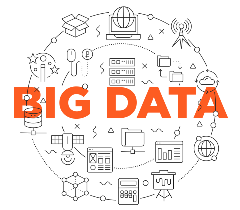by: Mark DeBree, CFA, Managing Principal
What’s the key to a credit union’s success? That’s an easy one. It’s the members. And these days, membership can be more diverse than ever, from the Silent Generation to the Gen Zs, with everyone in between. Add to that the rapid development of technology and the evolving desires of how our members want to conduct business with us, and voila — there’s now a stronger need to serve members in the way they want – and expect – to be served.
But how well do we understand the evolving member base? Do we really know them? Where are they in life, what are their needs, and perhaps most importantly, what will they need in the future…and when? As our credit unions grow and gain more members, it gets harder to know them. 
What can we do to gain more insights into our members? Two words: BIG DATA.
What Does that Mean?
The idea of big data sounds a little scary, especially when you read about the perceived over-reach of some of the giant tech firms, but credit unions have been compiling data for years. Fraud detection is an area that capitalizes on the use of big data to help us determine whether a transaction is likely fraudulent.
Does it Work?
Big data is little more than mining extremely large data sets to gain valuable insights for improving how we serve members. Take Amazon, for example. Amazon is constantly performing data analysis on customers and their needs. They feel confident they have a good idea of not only what our needs are now, but also what they will be in the future! Big data enables predictive analytics, which allows companies like Amazon (or your credit union) to get an idea of future consumer/member behavior to better forecast what they may want and when they may want it.
Where Do I Fit In?
As credit union leaders, we can use this concept to understand members and anticipate what kind of loans and services they need now and over the next 5-10 years. This gives credit unions a huge opportunity to lay groundwork that shows the credit union difference and how we can serve members effectively and efficiently.
How Do Credit Unions Benefit?
Conducting a performance analysis on your current membership provides insights into their current stage in the lifecycle. Combine this information with the ages individuals commonly apply for various loan products, and you have the knowledge to proactively market to and educate your members about loans before they even know they need them.
Insights can be gained for risk management practices, too. With a similar data set, we can evolve our deposit modeling and improve our expected cash flow modeling for interest rate risk and liquidity risk purposes. The ALM Team at Catalyst Strategic Solutions has been helping credit unions model these types of scenarios for years, and it has completely changed the view of expected deposit behaviors.
The expanded world of data analytics awaits us, limited only by our unwillingness to jump in and begin asking the questions, “Who are our members,” “What will they need,” and “How accurately do our deposit assumptions reflect our membership?”
Learn more about this topic at catalystcorp.org/forum by clicking the “2018 Forums Recap” button at the bottom of the page and selecting “presentations.”